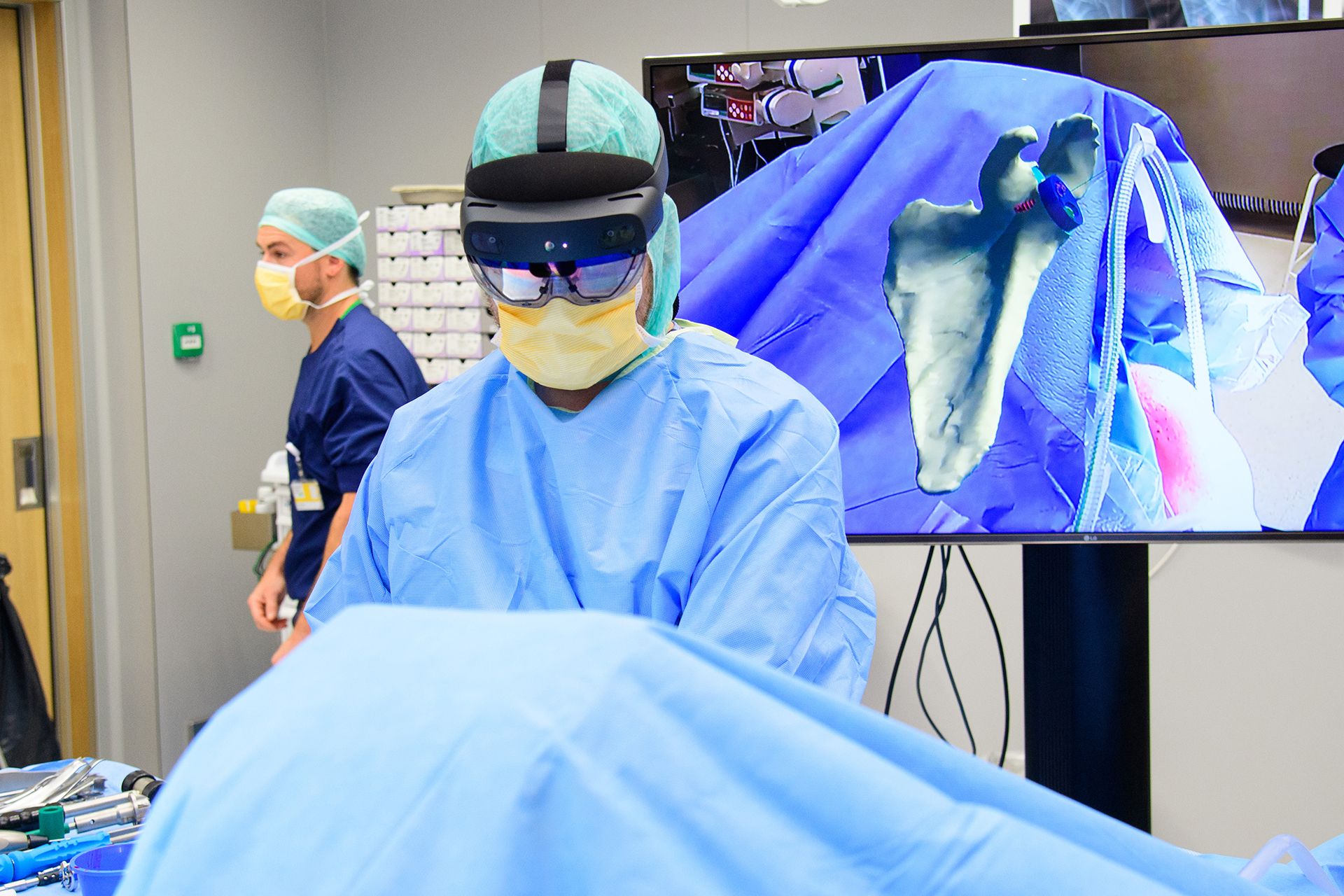Hospital Gelderse Vallei is the first hospital in the Netherlands to participate in research on the use of Augmented Reality (AR) in the placement of shoulder replacements. Orthopedic surgeon Alexander Poublon will operate using glasses. These will project a digital AR image of the shoulder joint onto the patient's shoulder.
The study should show whether the use of AR is feasible, as it requires a different preparation of the operation. Says Poublon, "As so often with innovation, I expect it to take more time in the beginning, but to save us a lot of time afterwards. I think we are going to see great results."
The pilot study is taking place in three Dutch hospitals. As part of the study, Poublon will operate three times using AR in December and January.
Whole shoulder joint in view
During surgery, Poublon wears glasses that allow him to see the AR image. Poublon: "During surgery, you have minimal vision of the shoulder joint because we only want and can make a limited opening. I only see a little bit of blood and a very small piece of the glenoid (the socket of the shoulder). And so not the whole shoulder blade.
This means that during surgery I have to rely entirely on the preparations and the image of the CT scan that was taken beforehand. With these AR glasses, I can "see" the entire shoulder joint on the spot because it is projected onto the patient's shoulder. This can help me determine the position of the prosthesis even better during surgery. This makes the placement even more accurate."
Better results
Says Poublon, "A tremendous amount has already changed in the field of shoulder prosthetics over the past 20 years. In the 1990s, the prosthesis was placed with the naked eye using alignment equipment. Since about ten years we have been working with navigation and 3D planning.
"This also greatly improved the results: 90 percent of patients have no or less pain after surgery and can perform daily activities well again. It is possible that augmented reality can further improve these results."












